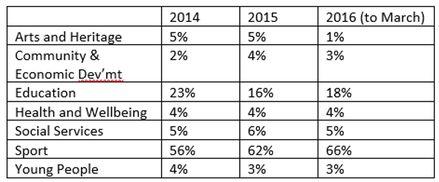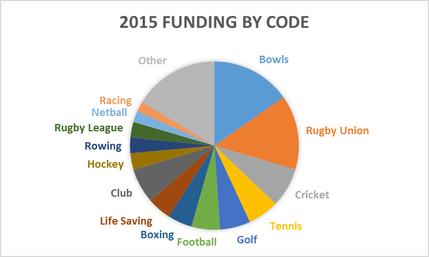
You can check it out yourself at http://www.cert.net.nz/ .
From their front page: “The Trust aims to distribute net proceeds to recognised appeal funds for the purpose of assisting with this recovery process.
“This includes making grants to appeal funds such as the Christchurch Earthquake Mayoral Relief Fund, The Red Cross 2011 Earthquake Appeal and the Christchurch Earthquake Appeal.
“In addition to the Trust's primary purpose of supporting Christchurch Earthquake Recovery, the Trust may also provide other grants towards general public education, educational scholarships, the promotion of public parks or museums and support for non-commercial emergency rescue services.”
So it’s a fairly general fund. In 2015 they distributed just over $2m into mostly Canterbury off 6 venues, four in Christchurch, one each in Kaiapoi and Kaikoura. Note their website points to one in Dunedin, but that looks to have moved to Southern Trust.
Funding decisions in the past 2 ¼ years are set out here. As expected, Sport certainly receives over half of the funding, and while there is no information, its likely much of the education spend goes towards sports within schools.

Where it gets interesting is looking at a breakdown by code. In Q1 of this year, Bowls received some $94k: 2015 Bowls got more than any other code, receiving just over $200k from this funder. Burnside Bowling Club in fact got some $41k in 2015, and $44k so far this year. When I try to see where the funding went, its bit tricky, as their 2015 published accounts (shown on the societies office website) only show just over $11k as grants revenue. However, there is a line in their balance sheet showing just over $100k as “Grants received to Action” which I would assume are grants received for capital development.
Rowing’s grants were driven by some big money going to Red Bladez.com ($80k in 2014, and $22k in 2015), the St Bedes team. I see this year the money is headed across town to St Thomas’ rowing team, with a grant of just over $10k earlier this year. Boxing is interesting too: Woolston Boxing Club received $26k in 2015, and has, so far, received $11k this year.
But I also found some interesting stuff in the Education grants. There are grants going to a whole range of schools, from Decile one to Decile 10. Now, for my sins I have got myself involved in my own school’s PTA. While its very easy to fill in a funding application and flick it off, I really do believe its better for the community to raise from within: it fosters a sense of ownership, one of belonging, and a stronger community. And the money that the school probably would have got is available to go to other, hopefully more deserving, organisations.
Now, all these organisations are perfectly entitled to apply for funding, and CERT is perfectly entitled to give their community funding to organisations who meet their criteria. However, the bigger question is whether these community groups should be asking for funding. Shouldn’t clubs be mostly sustainable on subs and member fundraising? If its an expensive sport, then should the community subside participants? How much is actually needed?
Would love to talk with you if you think this is just a little bit interesting.
 RSS Feed
RSS Feed